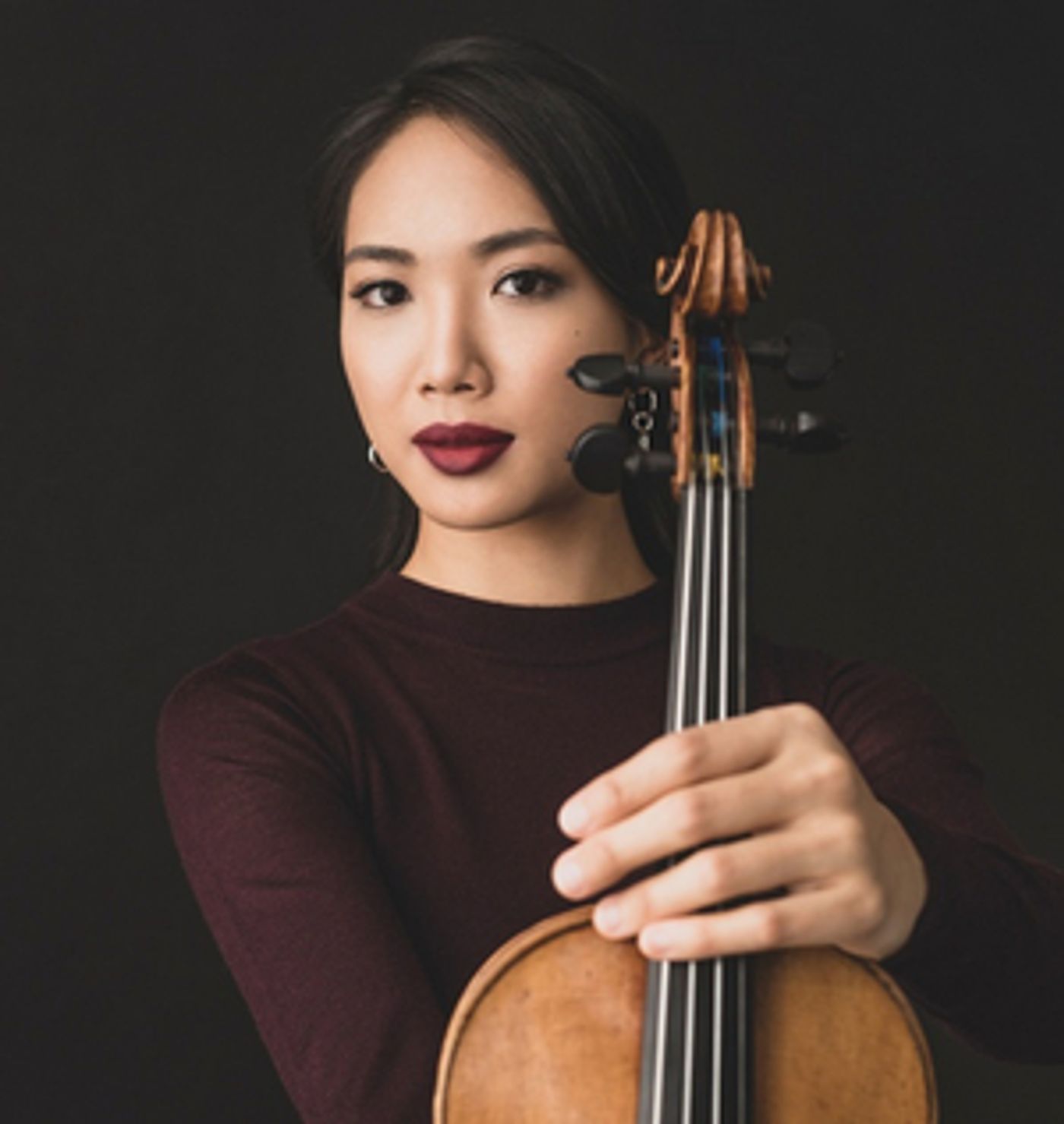Review: THE SAN DIEGO SYMPHONY PRESENTS SIBELIUS at The Jacobs Music Center

Conductor Eun Sun Kim is the recently named musical director of the San Francisco Opera. In her debut with the San Diego Symphony she opened her program with Korean composer Texu Kim's playful Spin-Flip. Two hyperromantic works followed, the Sibelius violin concerto and Rachmaninoff's third symphony.
In his program notes Texu Kim wrote, "Spin-Flip is an eight-minute overture which is all about Ping-Pong: it conveys the driving energy of a (good) Ping-Pong match."
Major-league cuteness, and fun, if you weren't expecting Bach or Palestrina. Speeds, dynamics and harmonies vary according to the whims of imaginary flailing limbs and bouncing balls--Spin-Flip is like an interval-training workout for orchestra. Conductor Kim managed the chaotic variations with considerable skill, and the orchestra kept up with every called for random-seeming change. Brass and woodwind soloists nailed unexpected Webern-like pointillistic accents while strings imitated the athletic motions of ping-pong players. It was up to the percussion section to supply the sounds of balls slamming onto a table or bouncing many times after hitting the floor, and the result was surprising realistic.
Without the composer's programmatic comments Spin-Flip would be much like many modern compositions--orchestral virtuosity, irregular rhythms, orchestration for texture rather than memorable melodies and harmonies. The sort of intellectual cleverness that has led to diminishing audiences for classical music. As a tone poem that tells the story of a ping-pong match, it becomes a challenge for listeners who must try to visualize what the composer imagined as he wrote his score, but not enough of a challenge to encourage additional hearings.
The sound worlds of Sibelius and Rachmaninoff need no programmatic content to

attract an audience. Sibelius's technically formidable violin concerto, one of the most popular concertos ever written, thrives because of the emotions it creates with gorgeous melodies, exciting driving rhythms and spectacular solo virtuosity. My favorite recording of the work is still that of the legendary Jascha Heifetz, but there are an amazing number of young artists today who can handle its technical demands in a concert hall. Nancy Zhou is one of them. Sustained writing in the violin's highest register or a trill on one string while the melodic line is on another-no problem. And that virtuosity is matched by tonal flexibility and emotional involvement. There was strength and beauty in the violin's entry that created chills, and the remainder of the first movement didn't disappoint. The slow middle movement was equally satisfying for tone and precision, but less so for holding attention as it lingered, over-lovingly at times, on the movement's gentle melodies. And in the same movement four French horns Sibelius assigns to provide a soft cushion of sound for the violin's mainline sometimes threatened to be more blanket than cushion. The final movement was quick and sure, though an exuberant orchestra covered a bit of the soloist's rising final notes. Kim was otherwise careful to support the violinist's interpretive approach, not always easy to do given Zhou's rhythmic freedom in the slow movement.
I love music from the Romantic composers. The first recording I ever bought featured pianist Leonard Pennario in Rachmaninoff's second concerto. The concerto remains a favorite, as does his second symphony. But the third is too much even for me. I don't usually think of "it sounds like movie music" as necessarily an insult, but in this case it is, and appropriately so. Except for one magnificent long and repeated melody in the opening movement, the work is like a giant musical marshmallow. Zhou's experience backing opera's emotional excesses probably helped make her an effective interpreter of this gushing romanticism, and the orchestra responded with enthusiasm to her direction. But lush swelling strings, powerful brass, delicious woodwinds and exciting percussion weren't enough to keep me from thinking of bad made-for-TV movies.
For a future concert schedule and ticket information visit the San Diego Symphony website.
This review is of a February 29th performance.
Photo compliments San Diego Symphony
Reader Reviews

Videos

